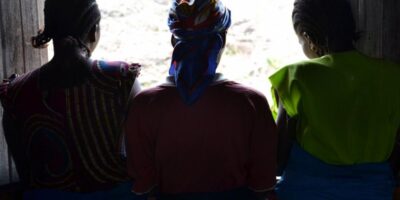The Federici Mera Munoz & Fondeur consortium was to build the longest bridge of the Caribbean in Haiti, as well as the Saint-Marc – Gonaïves corridor
The Federici Mera Munoz & Foundeur consortium could break out the champagne after being chosen in 2005 by the transitional government, headed by Boniface Alexandre and Gérard Latortue, to build “the longest bridge of the Caribbean in Haiti.”
The project was part of the rehabilitation project of the National road numéro 1.
According to the government white paper, of which AyiboPost obtained a copy, an overall amount of more than one billion gourdes was paid directly to the Federici Mera Munoz & Foundeur consortium, the Italian company responsible for the work.
The bridge was never built. And the road will only be rehabilitated in 2008, thanks to funds from the PetroCaribe program.
Payments to the consortium were made by the Ministry of Economy and Finance (MEF) at the request of the Ministry of Public Works, Transport and Communications (MTPTC).
On the one hand, an amount of 667 million gourdes was disbursed from the public treasury for the rehabilitation of the 45 kilometer stretch of the Saint-Marc – Gonaïves corridor. The work should not have exceeded twelve months, according to the contract signed on February 2, 2005 between the Haitian government and the firm.
On the other hand, in November 2005, a second agreement was signed with the same company for the construction of a 1.5 kilometer long bridge at the southern entrance to Gonaïves in Savane de Jonc. The cost of this project was set at 628 million gourdes.
“The rehabilitation of the Saint-Marc – Gonaïves corridor had begun well before 2005 with the same firm, explains Fritz Adrien, Minister of Public Works at the time. These operations were financed by the World Bank.”
In 2000, the Bank withdrew from the project due to political problems in the country, says Adrien.
“In 2005, the transitional government decided to renew the same contract with the firm, but this time with financing from the Haitian government, using funds from the public treasury,” confides the former government member.
Fritz Adrien was personally aware of the payment of a 30% advance to the firm Federici Mera Munoz & Foundeur to start the construction of the bridge. The funds were squandered even though this project was intended to solve the flooding problem in the city of Gonaives. For example, the city was submerged in 2008 due to hurricanes Ike and Hanna.
The Italian firm Federici Mera Munoz & Foundeur no longer exists in Haiti since this project was halted in 2006. It has no website or contact information available on the web. AyiboPost was unable to contact David Serrudo, the representative of the construction firm at the time the contract was signed in 2005.
Enold Dorsainville is a resident engineer in the city of Gonaives. He participated in the supervision of the work but did not want to give an interview to Ayibopost. “It’s already been 17 years, I don’t remember everything,” he says.
For engineer Bernard Chancy, director of Société LGL SA, a Haitian entity and the local subcontractor that supervised the work, the funds paid for the construction of the road and bridge were not really invested in the project.
The Superior Court of Accounts and Administrative Disputes (CSC/CA) did not provide AyiboPost with data on the budget allocated to the implementation of the project.
Carla Francesca Erié, communications officer at the Superior Court of Auditors, could not confirm for AyiboPost the availability of any audit report on the management of these funds, even after several searches.
“The firm had difficulties starting the construction of the bridge in time, explains engineer Fritz Adrien. The project finally started in January 2006, although that same year there were political problems.” The consortium was only able to lay the foundation and place a few posts, says the former minister.
The bridge was to cross Gonaïves through Savane de Jonc, an area regularly flooded during the rainy season. The road was to be elevated and allow seasonal water flow in the Savane de Jonc region, said Fritz Adrien, then Minister of Public Works, Transport and Communication (MTPTC).
After the damage caused in Gonaives by hurricanes Ike and Hanna in 2008, the administration of the late President René Garcia Préval used part of the PetroCaribe funds to build the Gonaives road.
According to the former minister of the MTPTC, the work done by the Préval government cannot be maintained over time. “The bridge was the best solution to deal with the flooding in the Savane de Jonc area.” Also, the threat of flooding in Gonaives is still present.
It should be noted that the last time Gonaives was flooded was in June 2022. According to the official report, the rise in water levels of about 1.50 meters damaged fifteen schools and flooded 1,300 homes. 3,000 families were affected.
English translation by Didenique Jocelyn and Sarah Jean.







Comments